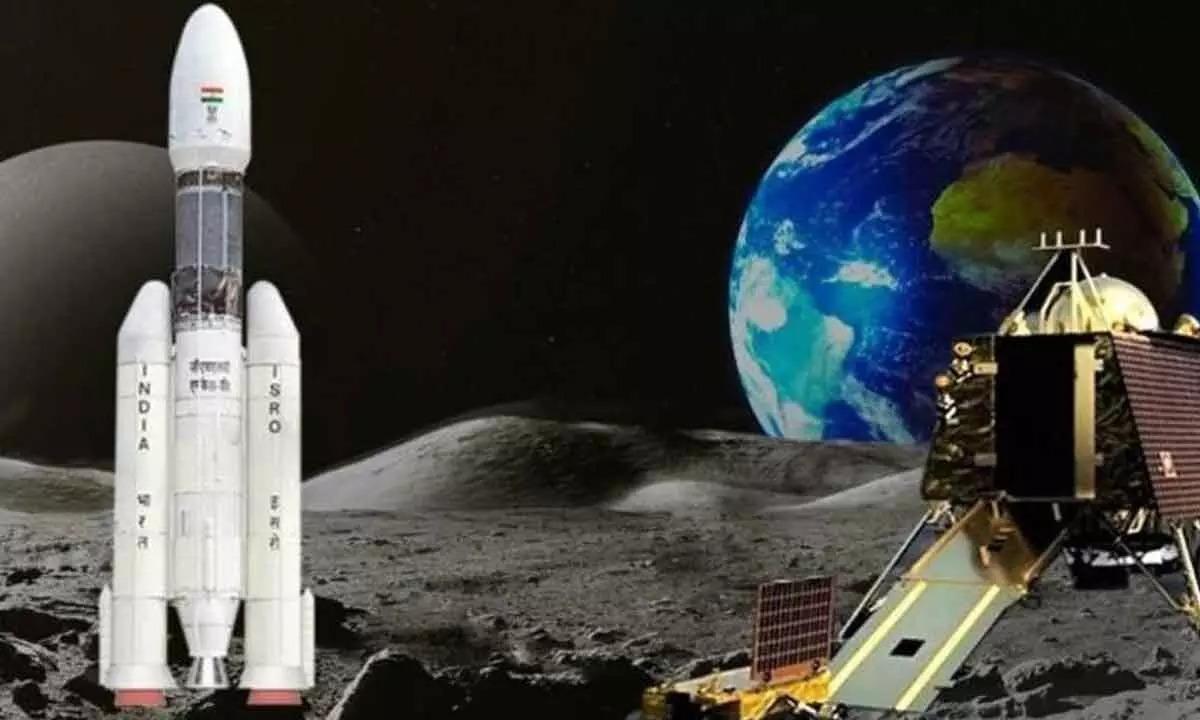July 2025
India’s Space Service Market: A New Frontier for Growth

Talk about shooting for the stars, India’s space game just went cosmic! India’s space ambitions have taken another historic leap with Shubhanshu Shukla becoming the first Indian astronaut to journey to the International Space Station (ISS). This momentous flight marks a major milestone in India's growing presence in the global space community and serves as a precursor to the country’s much-anticipated Gaganyaan mission 2027.
With India’s space sector rapidly advancing, this is just the beginning. Fueling hopes for a future where India dreams of its own space station by 2035, India’s space saga is definitely one to watch.
India’s Evolving Space Sector: A Competitive Global Player
The Indian space sector has historically been dominated by government-run organizations, most notably the ISRO. However, the past few years have witnessed significant changes with the rise of private enterprises and collaborative public-private partnerships. Government agencies have been instrumental in creating a conducive environment for innovation by promoting policies that encourage private sector participation, which has led to the creation of a thriving space ecosystem.
One of the significant enablers of this transformation is the Indian National Space Promotion and Authorization Center (IN-SPACe), which outlines an ambitious plan for India to capture 8% of the global space market by 2033 and grow the space economy to $44 billion. This has opened avenues for private companies to engage in space-related activities. As a result, India is positioning itself as a competitive entity on the global satellite economy by fostering growth in satellite deployment, satellite exports, space-enabled services, and launch vehicle technologies.
India’s track record in space exploration, marked by missions like Chandrayaan-3 and the Mars Orbiter Mission, has earned it international recognition for both cost-effectiveness and scientific rigor. However, to meet its 2033 goals, the nation must foster broader collaboration with industry players and continue building on its technological foundation.
Adding on to the evolving space sector, India’s space service market is entering a transformative phase, with a projected CAGR of 15.22% between FY2026 and FY2033. The market is set to grow from USD 2.38 billion in FY2025 to USD 7.38 billion by FY2033, reflecting the country’s increasing focus on space-related activities. This growth is underpinned by technological advancements, innovative policies, and a surge in private sector participation, all contributing to India’s emergence as a global player and the space economy trends.
The Role of Private Players
The reforms in India’s space sector, initiated by the government and supported by the formation of IN-SPACe, have paved the way for increased India space privatization. This momentum was further enhanced through policy updates such as the revised Foreign Direct Investment (FDI) policy for the space sector, the Norms Guidelines and Procedure (NGP) document for space activity authorization, and initiatives like Technology Transfer from ISRO and the establishment of a dedicated Earth Observation constellation involving the private sector.
These progressive measures have fostered a supportive environment for India’s private space sector, enabling it to leverage its expanding capabilities in satellite deployment, space exploration, and space-enabled services, with the goal of positioning the country as a leader in the global space race.
The Indian private space companies are not only driving innovation but also making space services more affordable and efficient. The launch vehicle segment, in particular, has seen the emergence of companies that focus on providing cost-effective solutions for satellite launches.
The entry of private launch providers has led to a more competitive market, driving down costs and increasing the availability of launch services. For instance, Skyroot Aerospace, a prominent Indian startup, introduced the Vikram-1 launch vehicle designed for small satellite deployment to Low Earth Orbit (LEO). This vehicle is tailored to meet the growing demand for small satellite launches, which are both cost-effective and have rapid turnaround times. With private companies entering the space sector, the overall efficiency of operations is improving, and costs are becoming more manageable, making India a preferred destination for satellite launch services.
Southern India: The New Space Hub
Regionally, Southern India, particularly Karnataka and Tamil Nadu, has emerged as a hub for space service growth. These states are home to a dense network of aerospace and defense industries, as well as educational institutions that are crucial for the development of space technologies. Bengaluru, the capital city of Karnataka, is a focal point of India’s space activities, housing some of the country's leading institutions like ISRO and private enterprises involved in space technology development.
The region’s concentration of expertise and resources is driving innovation in satellite deployment and launch vehicle services. The presence of institutions like the Indian Institute of Science (IISc), the Indian Space Research Organisation (ISRO), and several private Indian aerospace startups like Skyroot Aerospace and Agnikul Cosmos accelerates the pace of technological advancements in space. This vibrant ecosystem is expected to contribute significantly to the country’s space ambitions in the coming decade.
ISRO’s Groundbreaking Developments
The Indian Space Research Organisation (ISRO) continues to lead the nation’s space endeavors and plays a pivotal role in advancing India’s space capabilities. One of ISRO's reusable rocket is one of most exciting innovations, designed to carry out space tourism missions. In October 2024, ISRO introduced a cutting-edge system that can transport passengers to an altitude of 100 kilometers, offering 3.5 minutes of weightlessness during an 8.5-minute flight. This innovation aligns with ISRO’s broader vision of enhancing India’s commercial space missions and democratizing access to space.
Moreover, ISRO is working on next-gen launch platforms and the Next Generation Launch Vehicle (NGLV), a three-stage, partially reusable heavy-lift vehicle that will be essential for a range of missions, from satellite deployments to human spaceflight. The NGLV will also play a critical role in supporting India's planned space station by 2035 and its crewed lunar mission by 2040. This is a testament to ISRO's commitment to expanding India's capabilities in the space arena and making space travel more accessible.
Navigation and Mapping: A Key Driver for Growth
Improved navigation and mapping services are major contributors to the growth of the Indian space service market. With the rise in demand for accurate digital maps in sectors such as transportation, logistics, and urban planning, space-based solutions are playing an increasingly important role. The government’s investments in infrastructure and the smart city initiative have also led to greater demand for reliable mapping services.
Additionally, location-based services, especially in sectors like ride-hailing and delivery services, have further spurred the need for real-time navigation solutions. Space-based technologies such as GPS and Geographic Information Systems (GIS) have become indispensable tools for applications across various industries, including agriculture, environmental monitoring, and disaster management.
One notable development is Dhruva Space Private Limited’s authorization from IN-SPACe in July 2024 to deliver Ground Stations as a Service (GSaaS). The GSaas Dhruva Space is vital for providing dependable data transmission, enhancing mission adaptability, and reducing operational costs for satellite operations. The establishment of strategically positioned ground stations in equatorial regions further enhances satellite visibility and signal reliability, improving global satellite operations.
Satellite-Based Internet: Bridging the Digital Divide
Satellite-based internet is rapidly gaining traction as a solution to bridge the digital divide in India’s rural and underserved regions. Traditional internet infrastructure is often inadequate for these areas, but satellite internet offers a scalable solution to provide reliable connectivity to remote locations. This is crucial for digital inclusion, allowing communities to access essential services such as education, healthcare, and e-commerce.
The government’s focus on expanding broadband access fits well with the increasing need for satellite-based internet. Advances in Low Earth Orbit (LEO) satellite broadband are helping to reduce latency and provide faster internet speeds, making satellite internet a viable alternative to traditional broadband.
Reliance Jio, one of India's largest telecom companies, is set to launch satellite-based broadband services in India in 2024, marking a significant milestone in the country’s digital connectivity efforts. Once approved by IN-SPACe, this move will help expand broadband access to remote and underserved regions across the nation.
Space Technology in Agriculture: A New Frontier
The use of space technology in agriculture is revolutionizing farming practices in India and building a data-driven agriculture India. Satellite data is enabling farmers to access real-time information on crop conditions, soil health, and weather patterns. This empowers them to make better decisions regarding irrigation, fertilization, and pest control, ultimately improving crop yields.
One noteworthy initiative is the Forecasting Agricultural Output using Space, Agro-meteorology, and Land-based Observations (FASAL) project, which uses satellite imagery to provide more accurate forecasts of crop production and monitor environmental conditions. The government’s investment in satellite-based remote sensing capabilities is playing a critical role in optimizing agricultural practices and improving food security.
Cropin Technology, an AI platform for agriculture, launched Sage, a real-time agri-intelligence solution in 2024. The platform provides farmers with highly accurate and customizable data on global agricultural terrain, revolutionizing the way farming data is collected and analyzed.
Conclusion
India’s space service market is on the cusp of a major transformation, driven by technological advancements, private sector participation, and government policies that foster innovation. With a projected growth rate of 15.22% from FY2025 to FY2033, the market is expected to grow from USD 2.38 billion to USD 7.38 billion, placing India at the forefront of the global space economy.
Southern India’s emergence as a hub for space activities, the rise of private space startups, ISRO’s groundbreaking advancements, and the increasing integration of space technology in sectors such as agriculture and digital connectivity all contribute to the sector’s robust growth.
As India continues to invest in space technology, it is poised to play an even more significant role on the global stage, driving innovation and fostering economic growth through its burgeoning space economy. To delve into the details of the Indian Services Space market, download the report today or connect with our expert for a custom report.
Subscribe to our newsletter
Promise we won't spam you.
Share
Read More

July 2025
Gluten Be Gone: The Rise of the Gluten-Free Wave in Asia-Pacific’s Food Landscape
Asia-Pacific gluten Free Food and Beverages market is projected to witness a CAGR of 9.14% during the forecast period 2025-2032, growing from USD 2.16 billion in 2024 to USD 4.34 billion in 2032.

July 2025
India’s Quick Commerce Boom: The Rise, Race, and Reality of 10-Minute Delivery
Valued at USD 3.05 billion in FY 2024, India’s Q commerce market is not just growing, it’s exploding. Forecasts suggest it could soar to USD 13.38 billion by FY 2032, growing at a CAGR of 20.3%.

July 2025
Conversational AI: The Game-Changer That’s Reshaping Industries and the Future of Communication
In a world where speed and personalization are paramount, the global conversational AI market is skyrocketing, growing at a robust compound annual growth rate (CAGR) of 22.68% between 2024 and 2031. Starting at USD 9.97 billion in 2023, this market is set to soar to a staggering USD 51.15 billion by 2031.
REACH US



